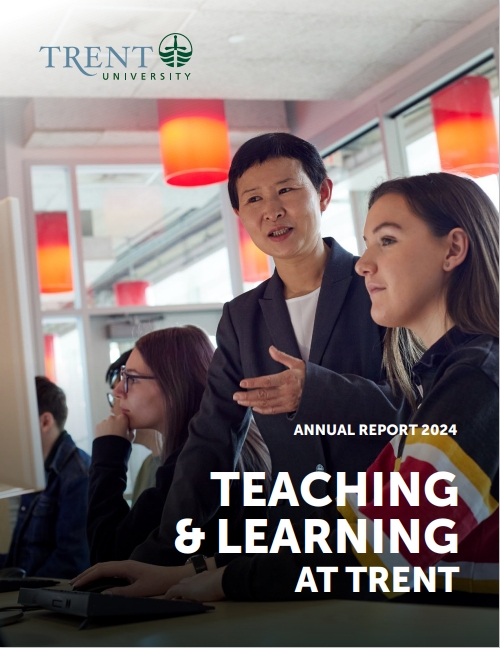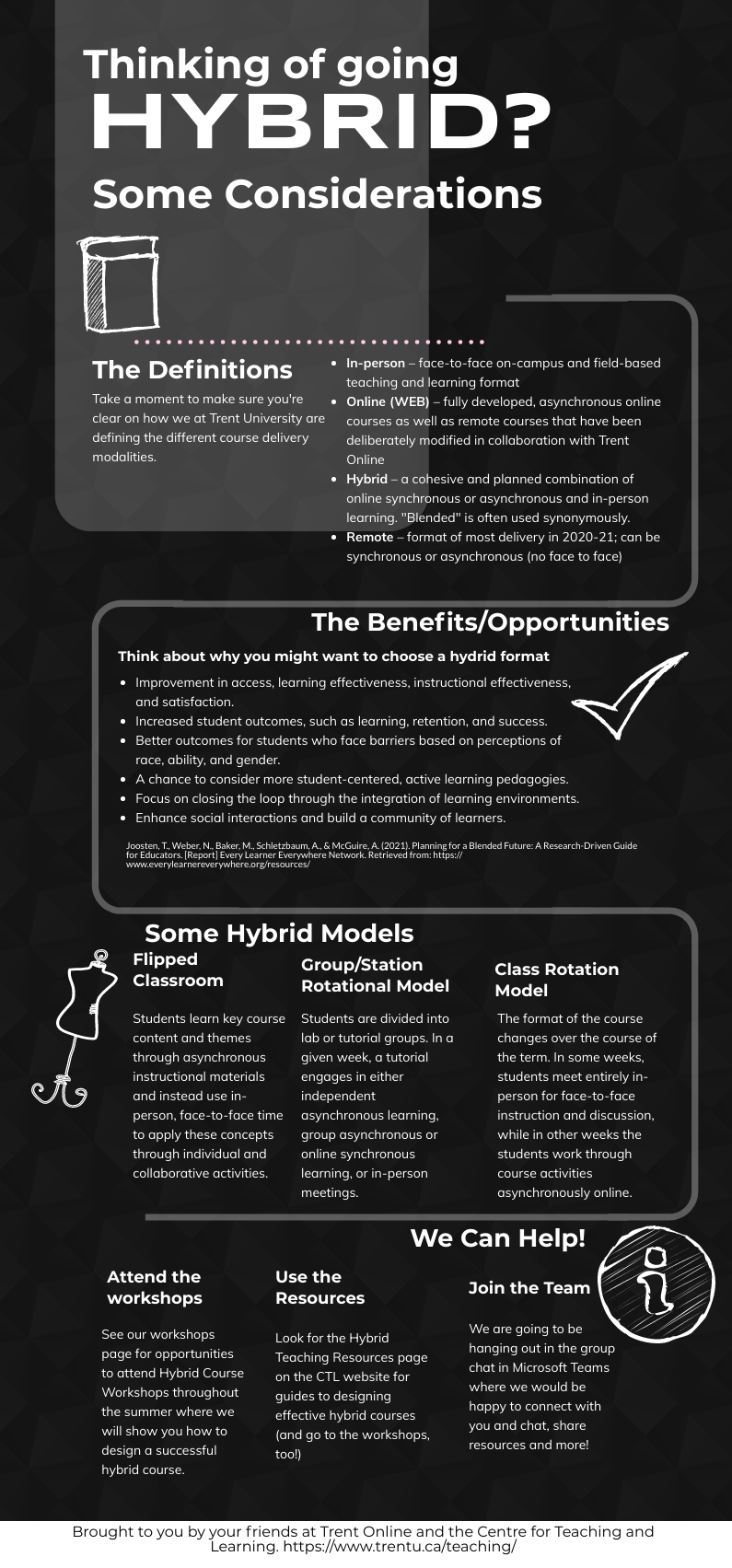Hybrid courses combine face-to-face instruction with online learning in order to take advantage of the strengths of both in-person and digital spaces; students attend some in-person class meetings and also engage with a significant amount of content asynchronously online. When done well, hybrid teaching offers significant benefits: Not only does the format allow for more flexibility and accessibility, research has shown that it can lead to better learning outcomes (Joosten et al., 2021). In well-designed hybrid courses, students are able to work through asynchronous course content at their own pace while still experiencing the immediate feedback and real-time engagement of the in-person classroom (Iowa State University, 2020).
The resources below provide guidance for instructors who choose to develop a hybrid course. If you would like to discuss further hybrid teaching or explore ways to adapt hybrid delivery models to your specific course objectives, please contact teachingcommons@trentu.ca.
Understanding Delivery Formats
Organizing a Hybrid Course
Creating Asynchronous Materials
Engaging Students Through Online Platforms
Resources for Flipped Classrooms
Understanding Delivery Formats
Accessible version of hybrid teaching infographic
Organizing a Hybrid Course
Engaging Students Through Online Platforms
Resources for Flipped Classrooms
- Flipped Classroom in Third-Year Undergraduate Statistics (O’Hagan)
-
Case studies in a flipped classroom: An approach to support nursing learning in pharmacology and pathophysiology (Mackie & Bruce)
Planning a Remote Course
- Learning Activities for a Remote Course: Options, Considerations, and Tools
- Sample Plans for Remote Courses
- Planning a Remote Course: A Checklist
- How to Organize a Blackboard Course
Engaging Students in a Remote Course
- Guidelines for Teaching with Zoom
- Guidelines for Using Discussion Boards in Remote Courses
- Trauma-Informed Teaching in Remote Courses
- Guidelines for Talking about Difficult Topics in a Remote Course
Assessing Students' Work in a Remote Course
- Guidelines for Selecting and Designing Assessments for Remote Courses
- Assessments for Remote Teaching: Definitions, Guidelines, Uses, and Limitations
Indigenous Pedagogy in Remote Courses
Supporting Students Who Cannot Come to Class
Sample Student Communications
- Sample Welcome/Orientation Emails
- Sample Check-In Email
- Sample Student Feedback Email
- Sample VoiceThread Introduction Assignment



